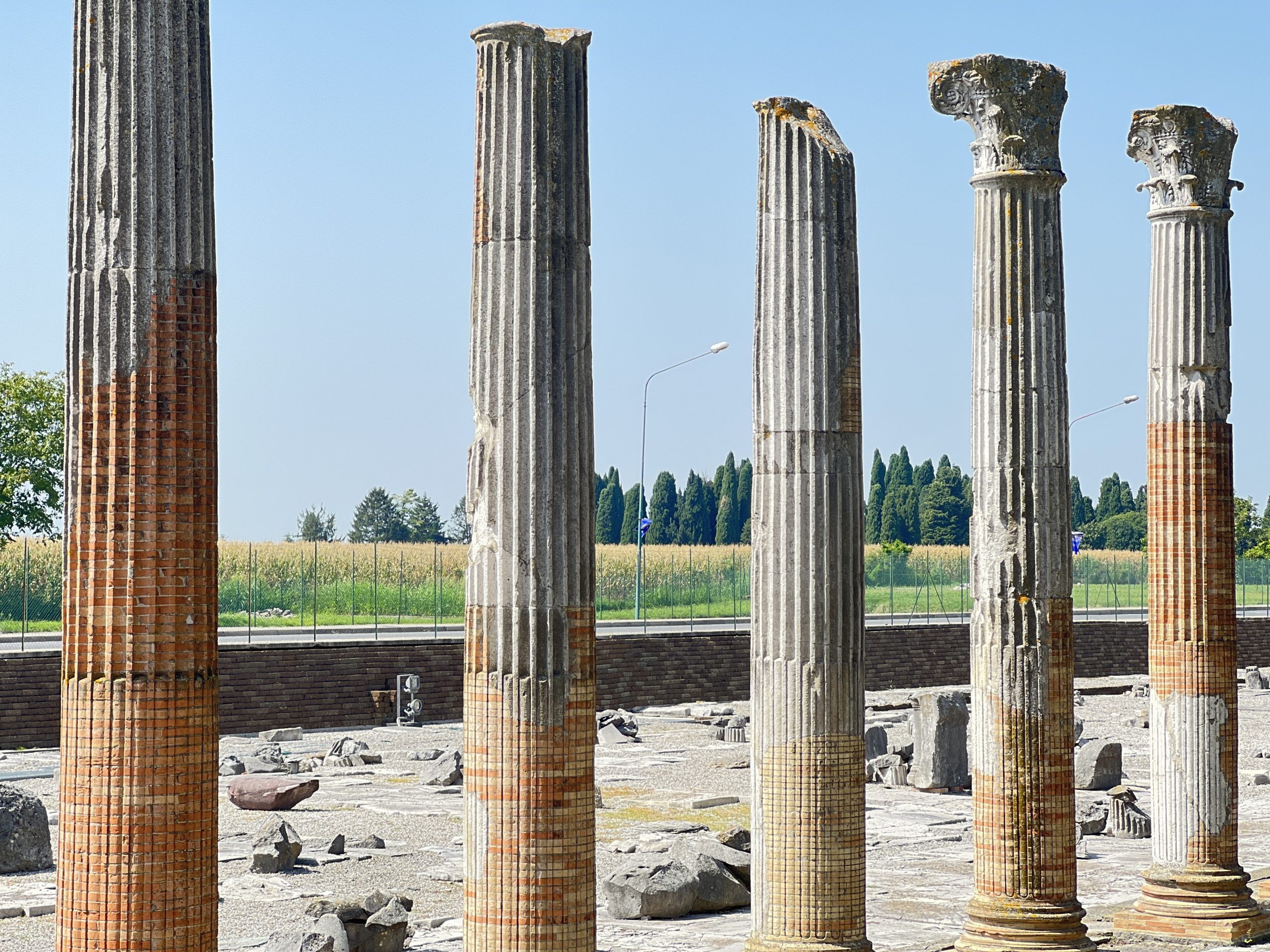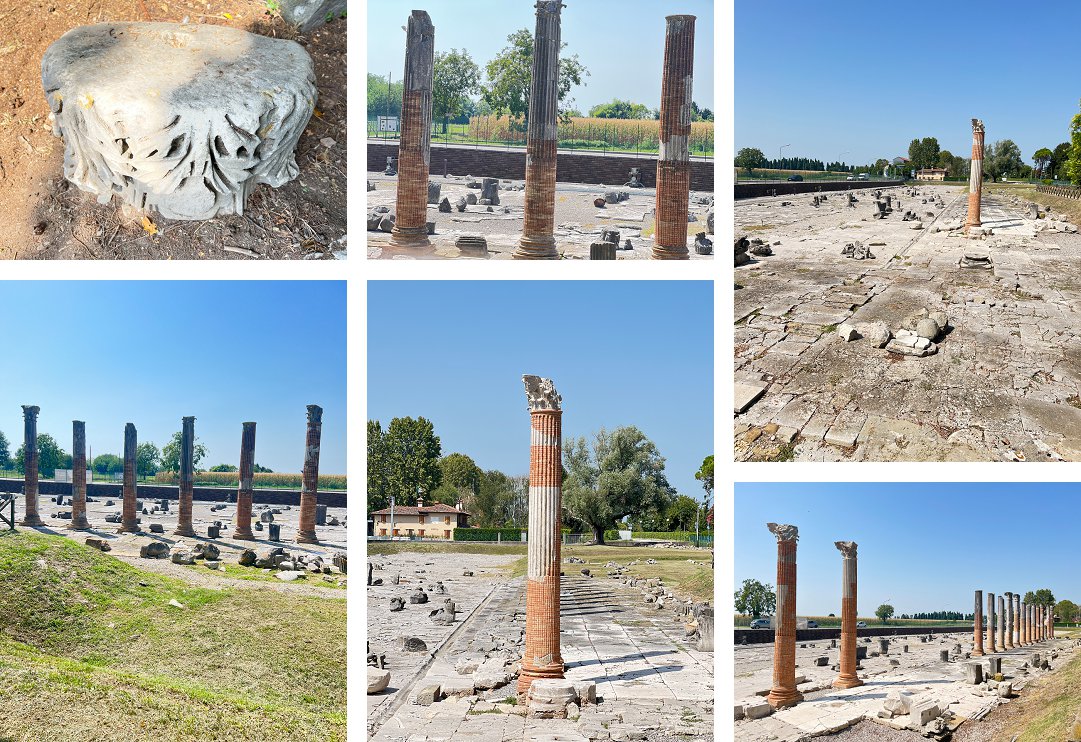Aquileia was an ancient city, founded in 180BC, lying at the head of the lagoons, to the east of Venice, on the road to Trieste, as a Roman colony due to its strategic position between the port and the inland area. It is one of the most important archeological sites in Northern Italy and it was elected UNESCO World Heritage site in 1998, for the significance of its archaeological area and the beauty of the floor mosaics, which can still be seen.
In the summer, we were travelling back from Venice, and rather than take the motorway, we decided to do a new route, a road which more or less hugged the coast and gave us the opportunity to visit the resort of Grado, which we’ve been intending to do for ages. But, before we got to Grado, we just had to stop, when this sight greeted us, at the side of the road…

We’d heard of Aquileia, but had no idea it was effectively an outdoor museum, full of Roman antiquities. It was a very, very hot day when we stopped, and we were keen to also get to the coast and hopefully find a cooling breeze, so our trip was short – but over the winter, we will return, as there is just so much more to see.
The Forum, of which these columns were a part, was the very heart of the political, administrative and social life of the city, built as early as in the 2nd century BC. It was huge and rectangular in shape, measuring nearly 200 meters long and about 80 meters in length, and originally there were 50 columns. Before being restored, the columns lay dispersed in pieces, all facing the same direction as a consequence of a violent earthquake. I love the idea that this is where citizens would meet each morning to buy and sell goods, chat about recent events or hire workers for the day. Politicians and merchants would talk to their friends and competitors, negotiate deals, discuss politics and try to increase their influence.
Today, the ruins cover quite an expanse, and there is a lot to see – a day would probably be needed to take everything in. I found this information online, which provides quite a guide to the town :
Within the archaeological area, much of it is in the open air and with free admission. Here you will find the remains of the Forum, the river port, and the late antique markets and the Roman burial ground. The precious mosaics uncovered during the excavations are preserved in the Paleochristian Museum and the National Archaeological Museum of Aquileia. The Basilica of Aquileia, is an extraordinary architectural complex bearing the signs of several renovations and extensions carried out over the centuries. At over 750 square metres, the real treasure of the basilica is the floor mosaic from the 4th century, the largest in the Western Christian world.
The archaeological site Domus and Episcopal Palace are also unmissable stops in Aquileia. Through the work of the Aquileia Foundation, visitors have the rare opportunity to see the superimposed floor levels of different eras thanks to skilful architectural play. This archaeological site is the most recent to be opened to the public.
January or February, with hopefully some snow, is when we are planning to return, and to get to know Aquileia more. We still it find it so exciting that we can just stumble across places like this – not in the sense that we’re the first people to have found these places, obviously. More in the sense that we didn’t know about them, until we either read about them, saw something online or drove past. And this is what makes living in Istria so cool – as well as all of the Roman and Venetian influences across our little peninsula, we are so close to Italy and all of its ancient sites. Some like Aquileia, almost being on our doorstep.

